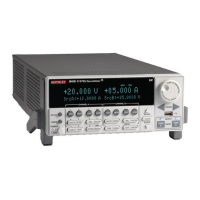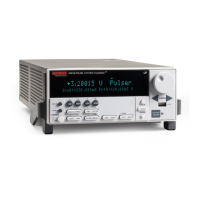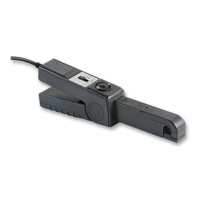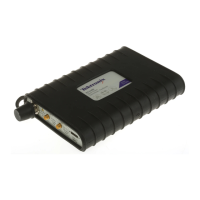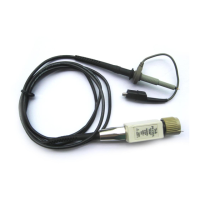High Voltage SourceMeter Instrument Reference Manual Section 6:
2470-901-01 Rev. A / May 2019 6-27
Using TSP commands:
Once you create a reading buffer using TSP commands, if you use that buffer name for
another buffer or variable, you can no longer access the original buffer.
The table below lists the TSP commands that you use for data storage.
Command Description
This function clears all statistics from the specified buffer. This function
does not clear the readings. See buffer.clearstats() (on page 14-8) for
This function deletes a user-defined reading buffer. See buffer.delete()
(on page 14-9) for more information.
This function creates a user-defined reading buffer. You cannot use this
command on the default buffers. See Creating buffers (on page 6-5) for
more information. Also see buffer.make() (on page 14-12).
This function saves data from the specified reading buffer to a USB
flash drive. See buffer.save() (on page 14-14) for more information.
This function appends data from the reading buffer to a file on the USB
flash drive. See buffer.saveappend() (on page 14-15) for more
For use with writable buffers only; this function sets the units and
number of digits that are written into the reading buffer. See
buffer.write.format() (on page 14-42) for more information.
For use with writable buffers only; this function writes the data you
specify into a reading buffer. See buffer.write.reading() (on page 14-44)
This attribute reads the number of readings a buffer can store. This
allows you to change the number of readings the buffer can store. See
bufferVar.capacity (on page 14-17) for more information.
This function clears all readings and statistics from the specified buffer.
See Clearing buffers (on page 6-24) and bufferVar.clear() (on page
14-18) for more information.
This attribute determines if a reading buffer is filled continuously or is
filled once and stops. See bufferVar.fillmode (on page 14-23) for more
This attribute indicates whether the reading buffer should log
informational events. See bufferVar.logstate (on page 14-26) for more
This attribute contains the number of readings in the specified reading
buffer. See bufferVar.n (on page 14-26) for more information.
This attribute returns the last index in a reading buffer. See
bufferVar.endindex (on page 14-21) for more information.
This attribute returns the starting index in a reading buffer. See
bufferVar.startindex (on page 14-36) for more information.
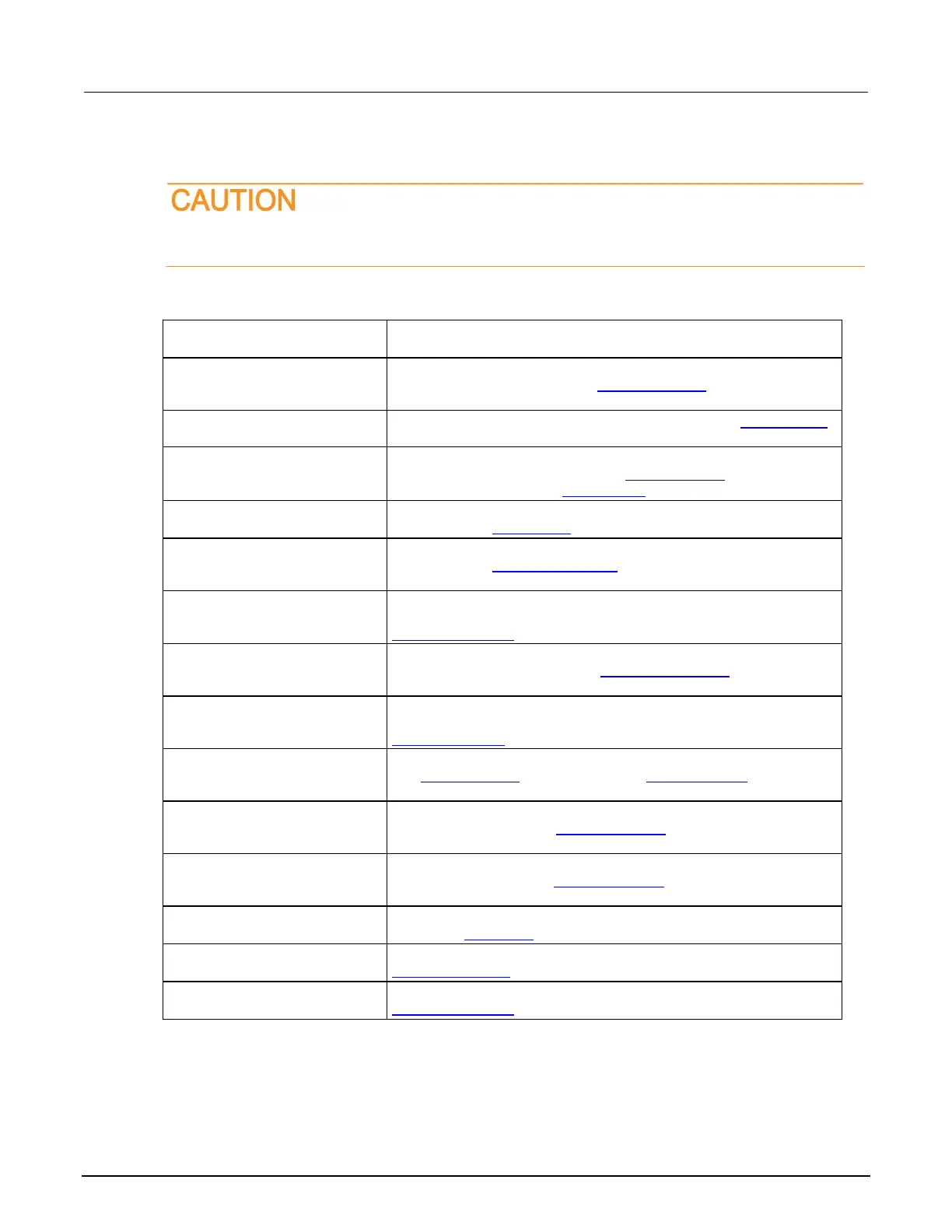